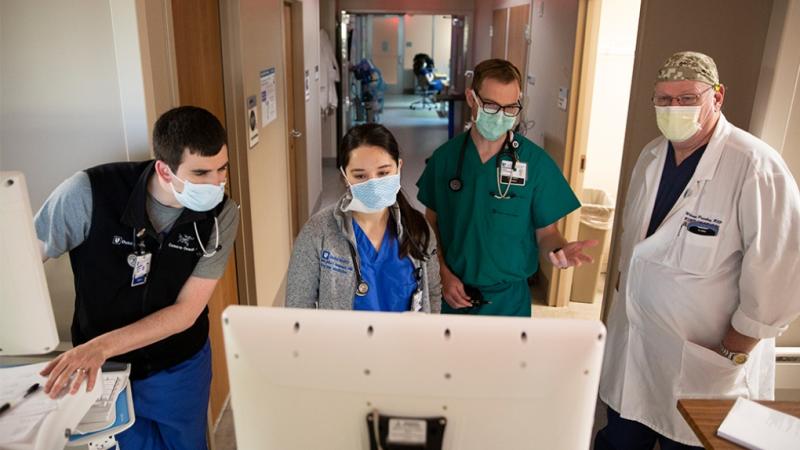
Responding to Pandemics: Past, Present and Future
Duke University School of Medicine faculty sprang to action to develop a course in world pandemics for medical students in light of COVID-19.
Alison Clay, MD, still remembers the room number—thirteen— of the first potential SARS (Severe Acute Respiratory Syndrome) patient she cared for during the 2003 outbreak in the United States.
Now, she is assistant dean for clinical education and an assistant professor of surgery and medicine in the Duke University School of Medicine, but in 2003, Clay was a newly minted fellow and attending physician in the surgical intensive care unit (SICU) of Duke University Hospital. The experiences she had as a young doctor during the SARS pandemic have stuck with her, shaping her identity as a healthcare provider.
“I remember thinking, ‘Wow—there is one patient in the hospital with possible SARS and I am able to take care of this patient because I was scheduled to be on call today,’” she recently told 90 medical students over an online Zoom session.
Clay knows that, without a doubt, today’s COVID-19 pandemic will play a similar role in the formative years of the medical students that she teaches and mentors. Although medical students currently have been removed from direct patient care in alignment with guidelines from the Association of American Medical Colleges (AAMC), they may have to treat patients during an outbreak of some kind in the future after they enter the medical workforce.
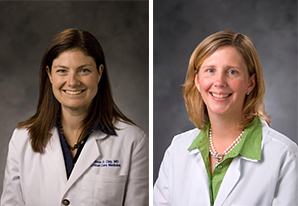
That’s why Clay and Nancy Knudsen, MD, assistant dean for learning environment, professor of anesthesiology, and associate professor of surgery, developed a crash course, “Responding to Pandemics: Past, Present, and Future.” The course, administered via the Trent Center for Bioethics, Humanities, and History of Medicine, runs from March 20 - April 24 via the online platforms Zoom and Canvas.
“We want to educate students about the nature of pandemics as well as guide reflection and provide support during these unprecedented times,” said Knudsen. “On top of that, we had several students who needed varying credits to graduate and were likely not going to be able to do their scheduled activities, so we wanted to provide opportunities for them as well.”
“This is an extraordinary opportunity for our students,” said Ed Buckley, MD, vice dean for education in the School of Medicine. “They will soon be the physicians on the front lines caring for patients, so we felt we had an obligation to create a learning opportunity for them.”
The idea for the course came soon after the pandemic began to enter the United States. Over the course of a few weeks in early March, Knudsen and Clay spent more than 250 hours designing the curriculum, identifying content experts across Duke, and building a team of clinicians, educators and logistical staff to make it all happen.
While all educational activities have moved online, students still have classes to attend and projects to complete. So, in order to offer students flexibility with scheduling and workload, the course is constructed using a building block model, allowing for 1, 2, 3, or 4 credit versions. There are four modules - history, current outbreak, health system policy, and medical practice—and each builds on the next.
Instructors are experts in critical care, emergency medicine, the history of medicine, and innovative frameworks for health care. They include Clay, Knudsen, Jeffrey Baker, MD, PhD, professor of pediatrics and history; Bruce Peyser, MD, professor of medicine; Julian Hertz, MD, assistant professor of surgery and global health; Dean Taylor, MD, professor of orthopaedic surgery; Sharon Kaiser, information systems manager at Duke AHEAD; Mitch Heflin, MD, professor of medicine; Jedrek Wosik, MD, resident in the Department of Medicine; Genie McPeek Hinz, MD, Associate Chief Health Information Officer for Duke University Health System; Patty Lee, MD, professor of medicine and cell biology; Suresh Balu MBA, MS, associate dean for innovation and partnership and director of the Duke Institute for Health Innovation; and Mary E. Klotman, MD, dean of the Duke University School of Medicine.

“The course has been incredibly flexible and well-organized despite only a few weeks to pull everything together,” said MD/PhD student Rui Dai. “The COVID-19 pandemic has impacted everyone’s lives, and the course provides a unique insight into the history and current approaches to pandemics. I really wanted to take advantage of the opportunity and learn as much as possible from such a challenging situation.”
“As an infectious disease physician-researcher, I spent my early years on the front lines as HIV had just emerged. Not only was it a remarkable learning curve for me, it provided personal clarity of my purpose in my career choice,” said Klotman. “COVID-19 has presented another opportunity to learn and our students have the chance to grow and contribute during this pandemic.”
What Past Pandemics Can Teach Us
Students complete a module about the history of past pandemics, which includes an overview of the 1918 Spanish influenza, the American polio epidemics of the mid-20th century, and the HIV epidemic beginning in the 1980s. They participate in a discussion on the role of healthcare workers during pandemics and choose a book about pandemics to discuss with the group. Books for consideration include “The Hot Zone: A Terrifying True Story” by Richard Preston; “The Plague,” by Albert Camus; and “Ebola: The Story of an Outbreak” by Laurie Garrett.
This section is led by medical historian and Director of the Trent Center for Bioethics, Humanities, and History of Medicine Jeffrey Baker.
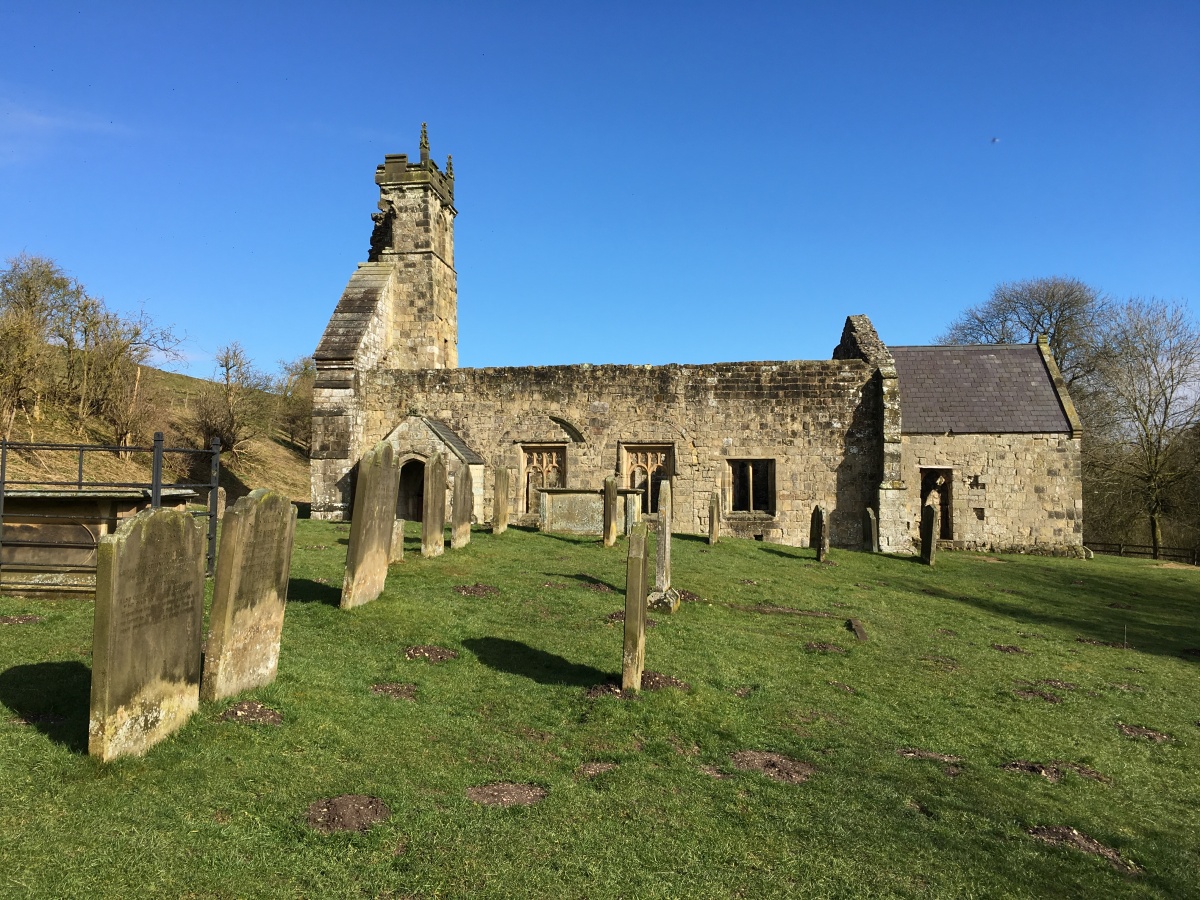
Baker took the photo during a research trip there.
“When you think about it, every generation in the past century confronted a great pandemic, and each of those experiences can teach us valuable lessons about the ecology of microbes and how they interact with human societies,” said Baker. “The history of pandemics can also tell us about ourselves. Fighting epidemic disease can bring us together. But epidemics can also separate us, turning our fellow citizens into potential threats and creating fear of the ‘other.’”
Norah Karlovich, a third year medical student, said she was initially drawn to the course because of the history component. Her experience in Baker’s 20th Century History of Medicine course impressed upon her the important role that historical knowledge plays in current events.
“Thus far, I am struck by the parallels we can draw in our responses to COVID-19 and to other pandemics such as the plague,” she said. “We discussed how pandemics throughout the centuries have continued to quickly highlight the stark and persistent divide between socioeconomic classes, xenophobia, and pervasive fear of the ‘invisible enemy.’ Fortunately, in the COVID-19 application portion of the course, we are also able to discuss the positive aspects of this pandemic, such as the surge in volunteerism and significantly improved air quality due to decreased travel.”
What the Current Pandemic is Teaching Us
As students are examining comparisons between the evolving COVID-19 pandemic and historical pandemics, they are also asked to observe the media’s response to the COVID-19 outbreak, and keep a daily journal reflecting the evolution of the outbreak.
“I signed up for the course because it is an incredible opportunity to engage with the subject of pandemics while being in the midst of one,” said Jordan Hildenbrand, a third year medical student. “It is a more productive way to channel my nervous rumination about the coronavirus pandemic, a chance to make real contributions to the shifting of medical school education to a virtual format through the education innovation practicum, and a chance to connect with my classmates on a topic directly relevant to our lives right now and future medical practice.”
Students were virtually transported to the front lines of the pandemic when they heard from another course instructor, Julian Hertz, MD, assistant professor of surgery and global health.
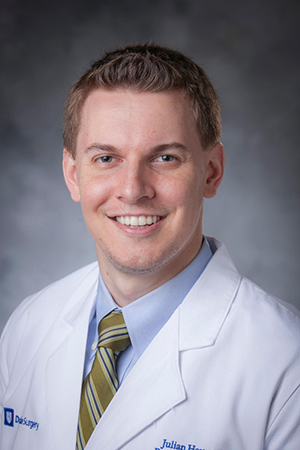
Hertz shared how his experiences volunteering at a health clinic in Haiti as a recent college graduate informed his decision to go into medicine, and ultimately, emergency medicine. He is now one of the attending physicians handling intubations of COVID-19 patients in the emergency department at Duke University Hospital. It’s a job with an especially high risk of exposure, and one that he doesn’t take lightly. However, he said that his passion for helping people and his vision of the physician as public servant is what keeps him going.
“I’d be lying if I said I didn’t come to work and feel a little bit anxious and scared,” Hertz told students in an online Zoom session. “Every time I have to don my protective gear and then wipe it down with purple wipes and hope I got every crevice…it’s a little anxiety provoking. However, courage is not the absence of fear, but just doing what you signed up for. It’s just remembering that this is the core mission of being a physician and that this is what makes our job so great but also sometimes really hard.”
Medical student Terrell Jones, who plans to go into emergency medicine, took the course to learn about what sort of preparation is required to best care for patients during a pandemic.
“As a fourth-year medical student entering the field of Emergency Medicine, it is essential that I am well-informed and prepared to address the challenges associated with caring for my local and global communities,” said Jones. “I believe the course will equip me with the resources and understanding necessary to be a frontline provider during times such as these.”
How Health Systems Could and Should Respond
Students are also learning about public policy, global health and leadership during a pandemic. They are taught about agencies that organize and respond to public health crises, including state and local health departments as well as national and international organizations such as the Centers for Disease Control and Prevention and the World Health Organization.
In addition to participation in online conversations, students pick a specific outbreak in the past and prepare a presentation that highlights how local, national and international agencies responded and how the outbreak was contained.
“I believe this course is preparing me and my classmates on how to have open discussions about difficult topics, such as resource “rationing” and social inequities in our healthcare system,” said Karlovich.
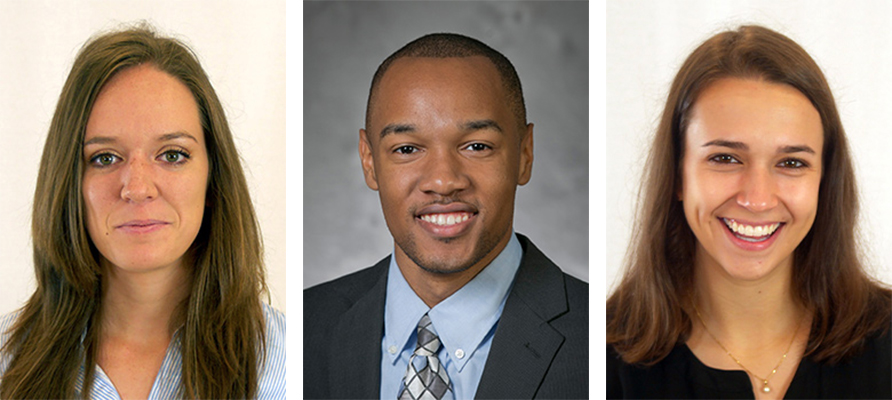
Two online sessions will focus on leadership in crisis, with one including a discussion with Dean Klotman about responding to the pandemic as a health system.
“We are very fortunate at Duke and in the School of Medicine to have leaders who are so committed and innovative,” said Dean Klotman. “We have a great team who have had to make important decisions and execute rapidly to adjust to this evolving crisis – all while keeping our focus on the ultimate goals of helping people and ending this pandemic.”
Practicing Medicine During a Pandemic
Students in the class are required to demonstrate an innovative way that they can contribute to patient care, research or education at Duke during the pandemic. Because medical students are not allowed to treat patients in person, and many have been removed from clinical rounds, students are asked to envision other ways they can help.
“Our students have really stepped up and are contributing in so many ways,” said Buckley. “Some are learning how to use data from electronic health records to study the impact of COVID-19 on the delivery of healthcare at Duke, while others are learning about educational technologies for distance learning and developing an educational module that a peer could use to learn.”
“Students are also joining telehealth sessions with outpatients and rounding ‘live’ with teams in the hospital through iPads,” he added. “They are using novel technologies to make protective equipment, limit disease spread, and even producing ventilators and are also volunteering to assist our healthcare providers with child care, pet care, and getting groceries.”
“Our students are exceptional, and we wanted to make sure that through this course they are given opportunities to be better informed and to help patients in our health system and each other,” said Clay.
Top feature image, courtesy of Shawn Rocco in Duke Health, shows doctors and healthcare professionals in a Duke Health Intensive Care Unit during the COVID-19 pandemic.
Lindsay Key is the science writer for the Duke University School of Medicine, and editor of the online storytelling magazine Magnify.
